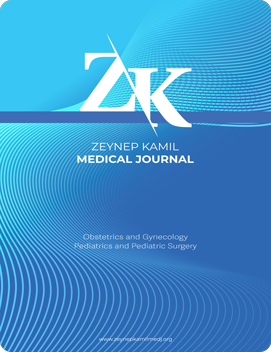Quick Search
Factors affecting insulin dosage in pregnant women with diabetes
Gizem Boz Izceyhan1, Ceren Ünal2, Erbil Çakar11Department of Obstetrics and Gynecology, University of Health Sciences, Turkey. Istanbul Zeynep Kamil Maternity and Childrens Diseases Health Training and Research Center, Istanbul, Turkey2Department of Obstetrics and Gynecology, Koç University Faculty of Medicine, Istanbul, Turkey
INTRODUCTION: We aimed to explore the clinical indicators necessitating insulin therapy and the factors affecting the amount of insulin used by pregnant women with diabetes diagnosed either during or before pregnancy.
METHODS: We reviewed all diabetes-related prenatal clinic visits from January 2015 to December 2017. A keyword search of electronic medical data identified cases of gestational, pregestational, type 1, and type 2 diabetes. Pregnant diabetics treated with insulin were included. Age, parity, consanguineous marriage, birthweight of prior children, first-degree relatives with diabetes, BMI before pregnancy, weight gain during pregnancy, and exercise compliance were recorded. Total insulin dose, as well as short-, intermediate-, and long-acting insulin doses, were documented separately. Hyperemesis in the first trimester, dietary changes, and ketonuria were also noted. HbA1c readings were obtained when gestational diabetes mellitus was diagnosed and when pregestational diabetes mellitus patients first visited our institution. Plasma lipid profiles were measured in all cases. Third-trimester fetal biometry was calculated using three ultrasonographic measurements.
RESULTS: A total of 202 diabetic patients were included in the study. The prevalence of pregestational diabetes mellitus was 52.5%, while diabetes diagnosed during pregnancy accounted for 47.5%. The combined effect of age and the discrepancy between the last menstrual period and abdominal circumference was found to be statistically significant in predicting insulin dosage. Specifically, total insulin requirements increased by 1.903 units for every additional year of age, and by 4.390 units for every unit increase in the Last Menstrual Period/Abdominal Circumference discrepancy.
DISCUSSION AND CONCLUSION: The global rise in diabetes prevalence has led to an increase in pregnancies complicated by diabetes. Our objective is to manage this condition optimally, enabling patients to continue therapy with minimal adverse effects and achieving the best possible outcomes for both mother and baby.
Manuscript Language: English
















